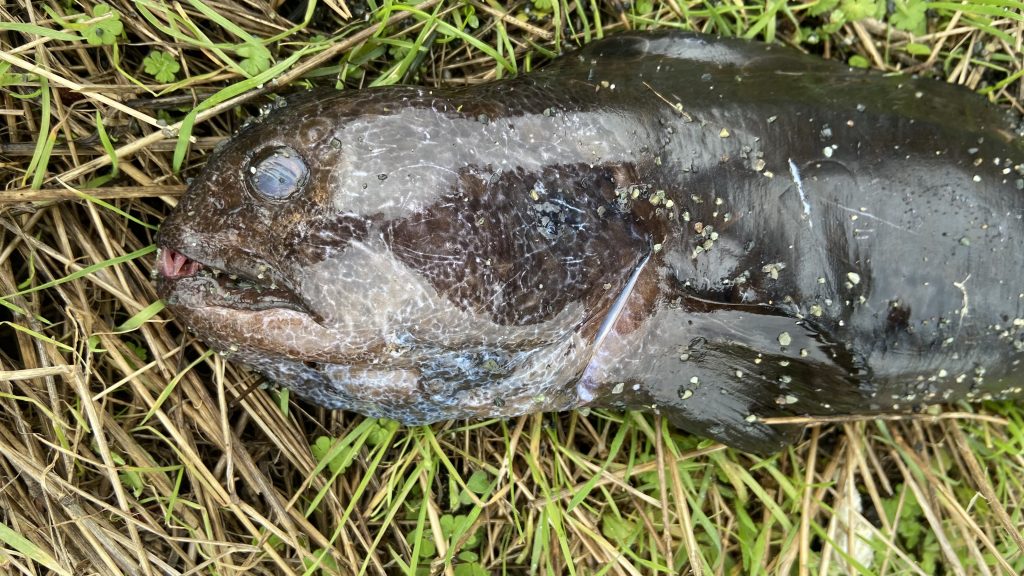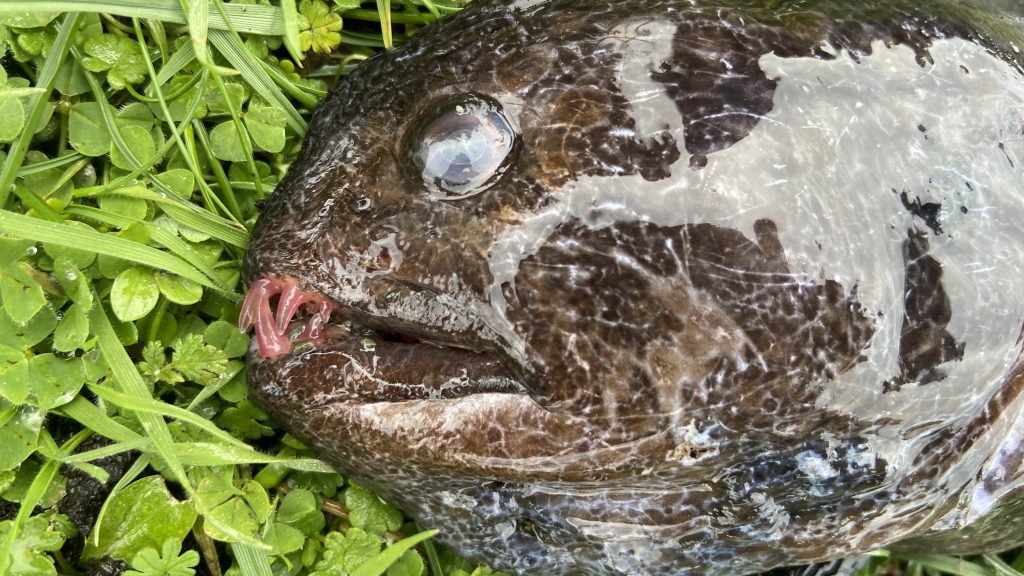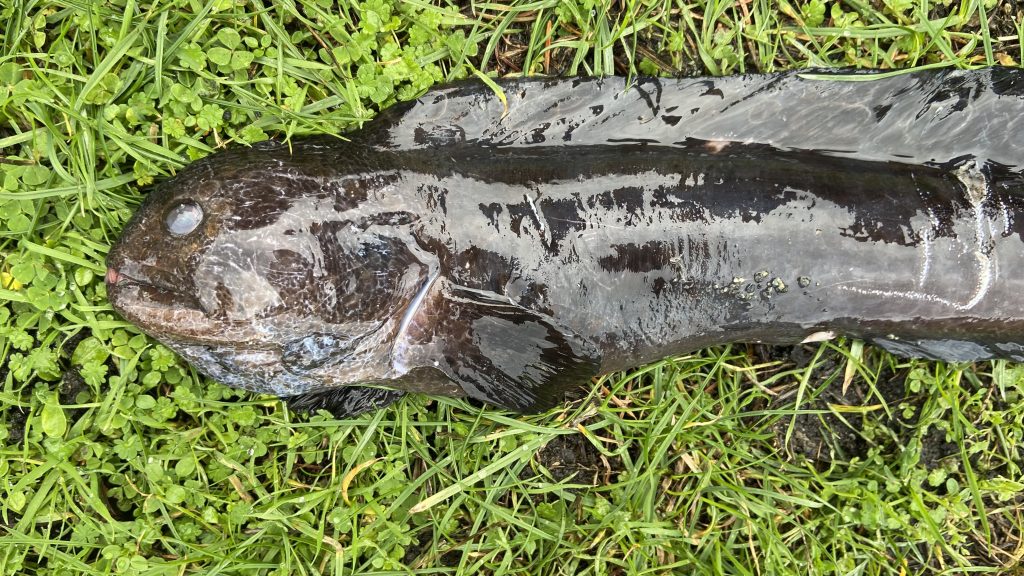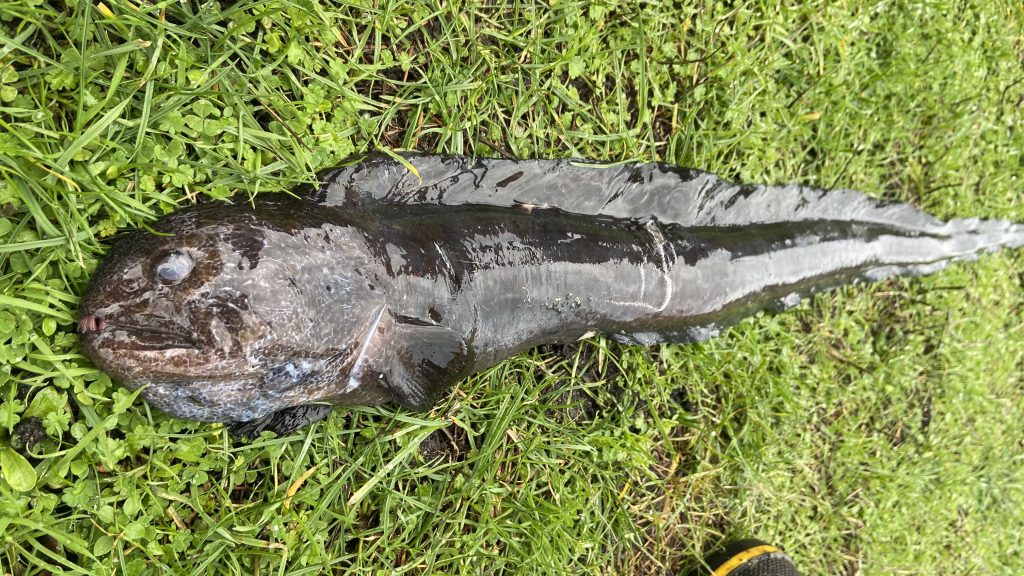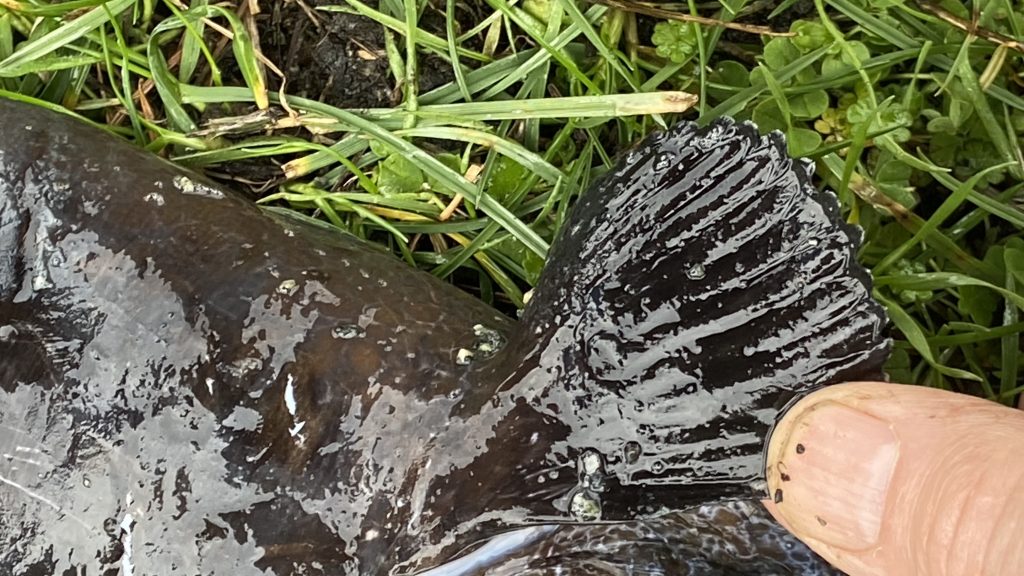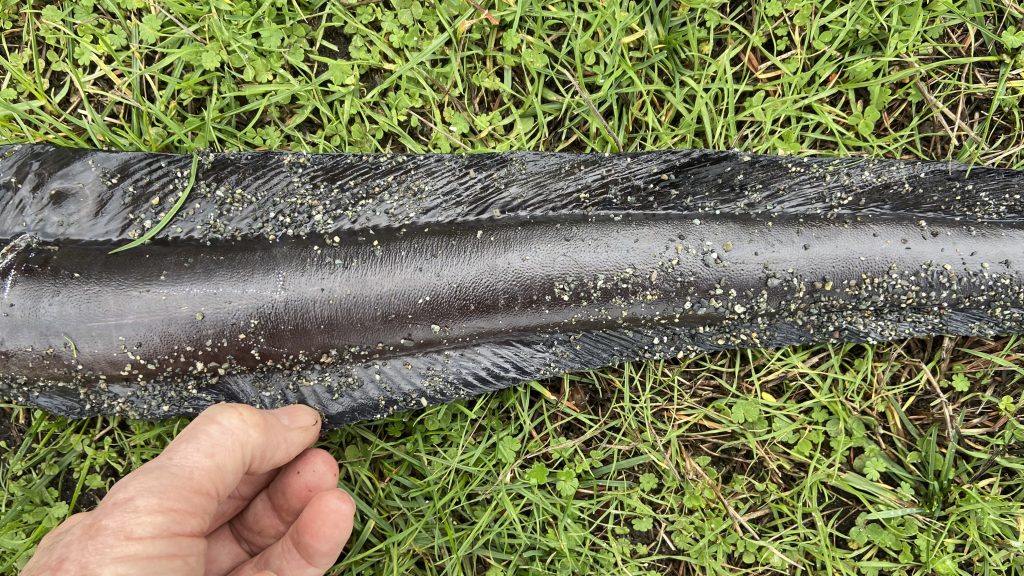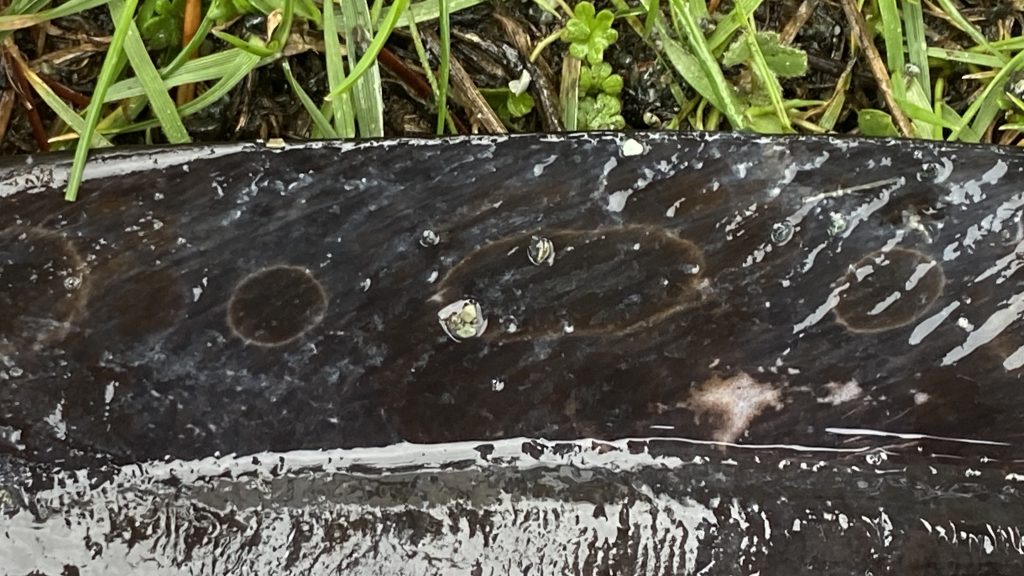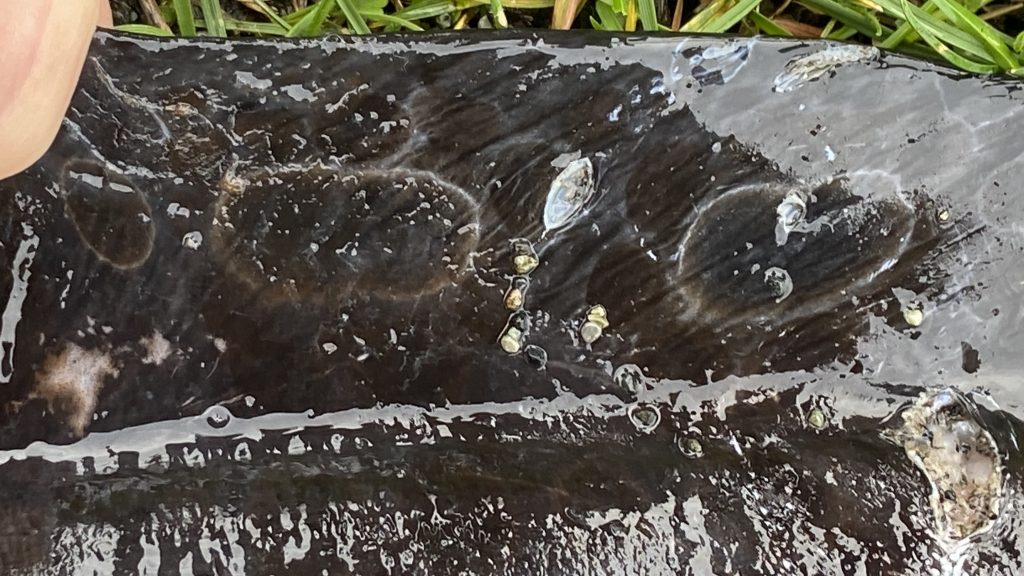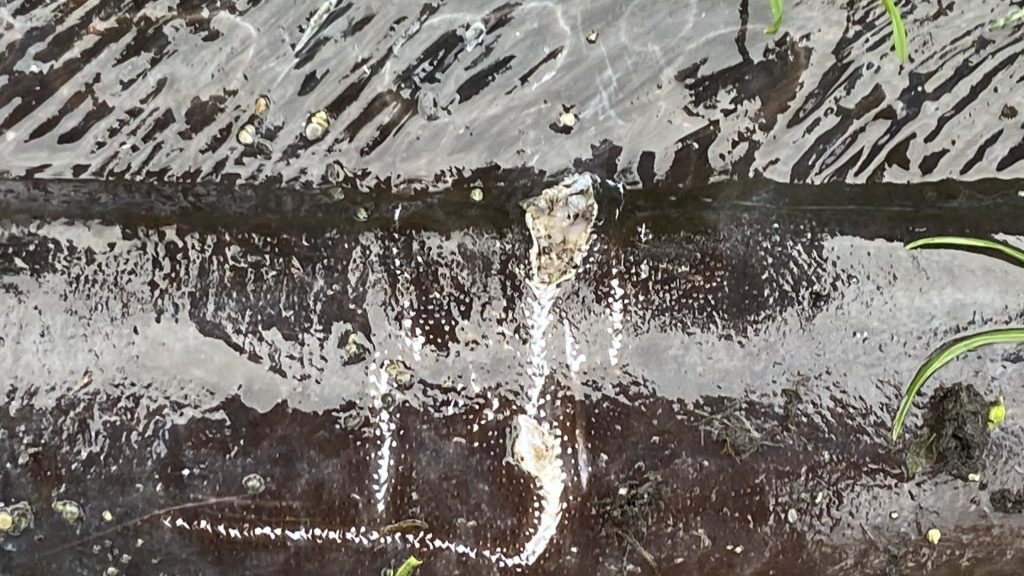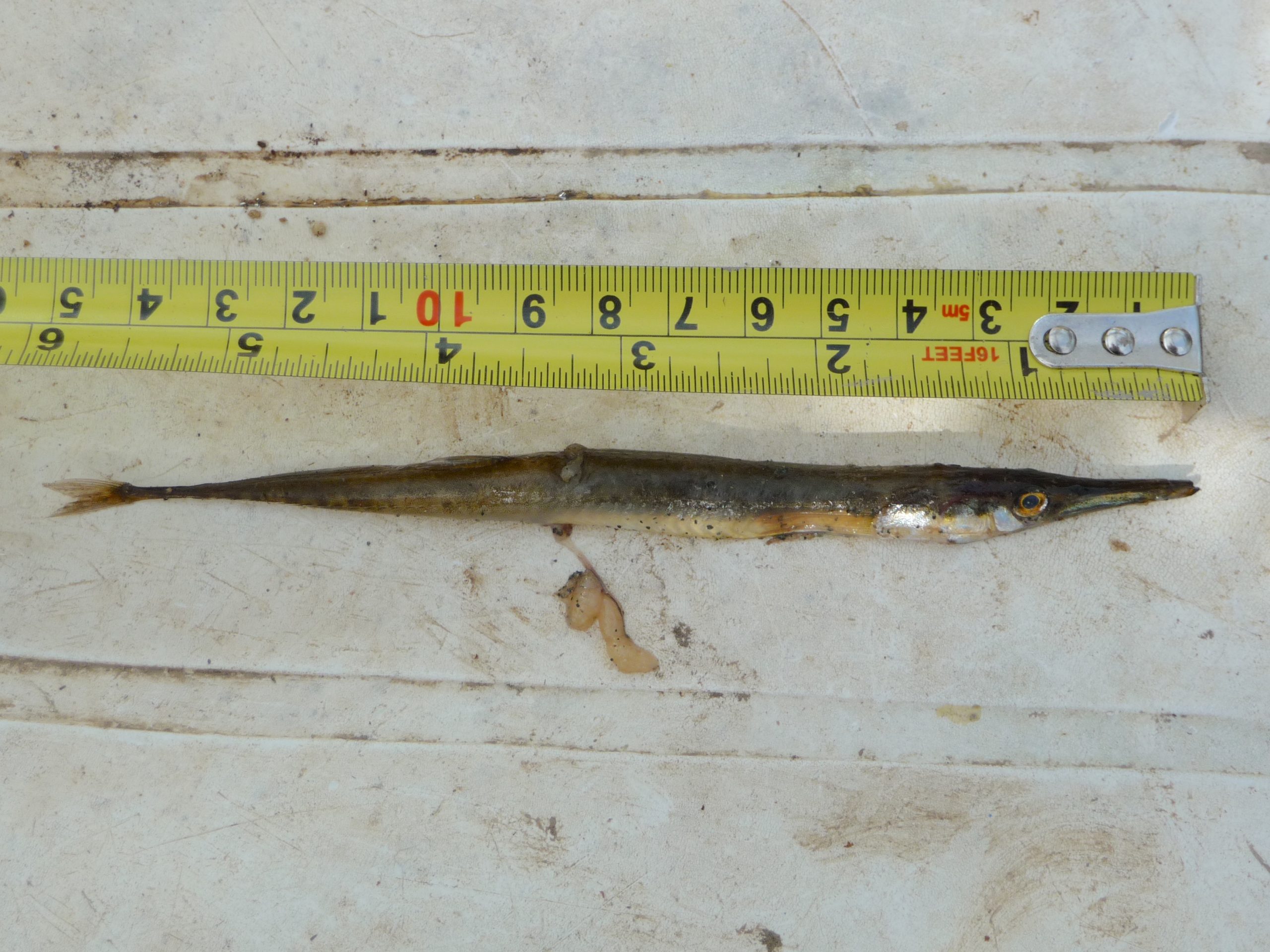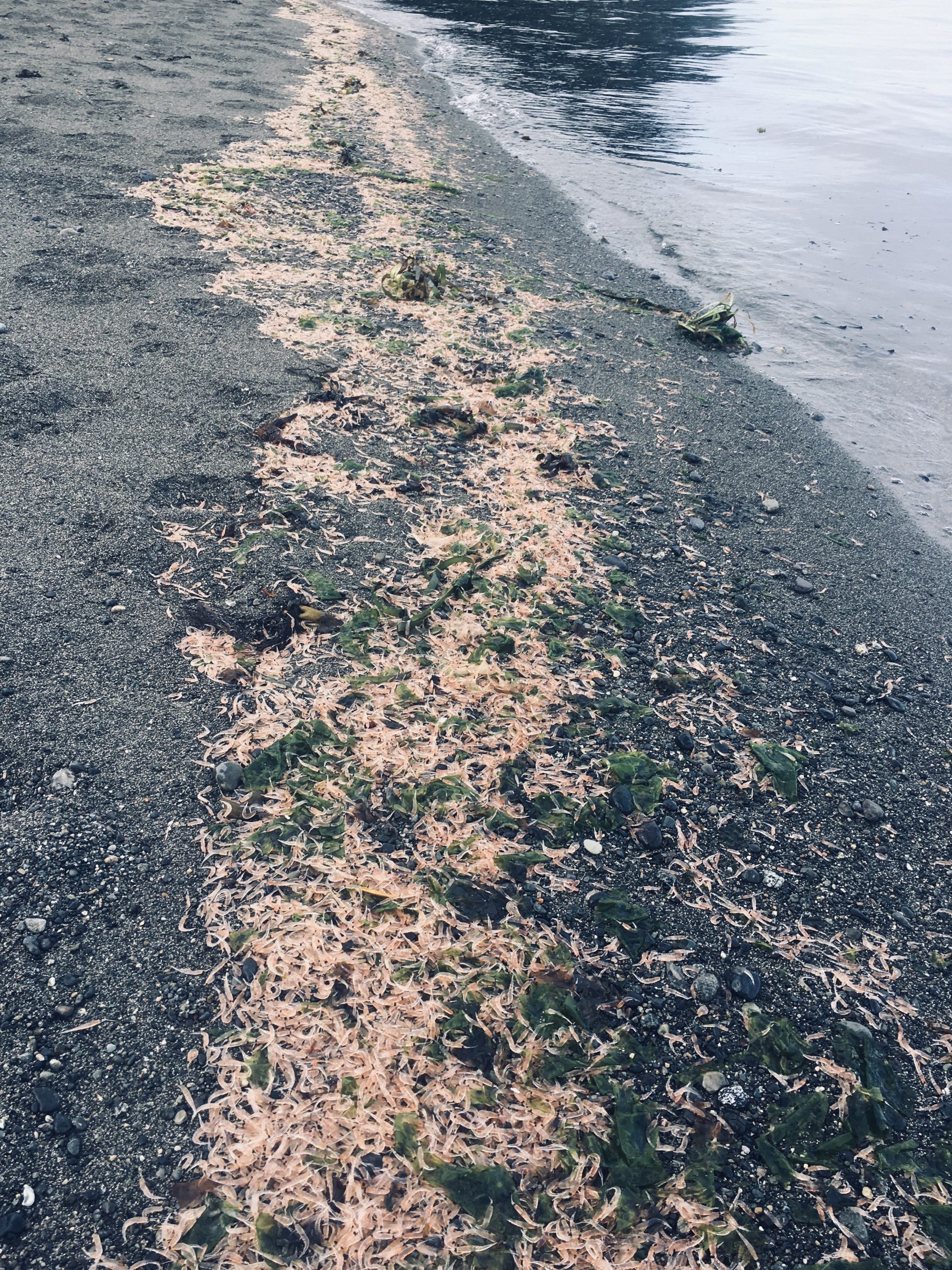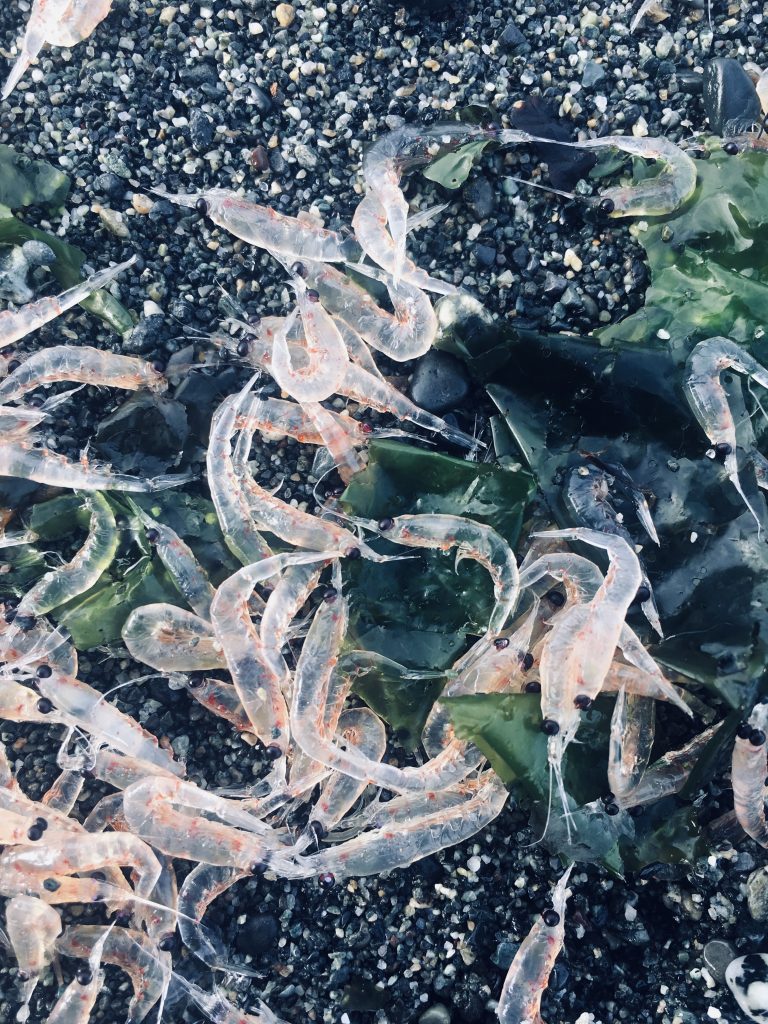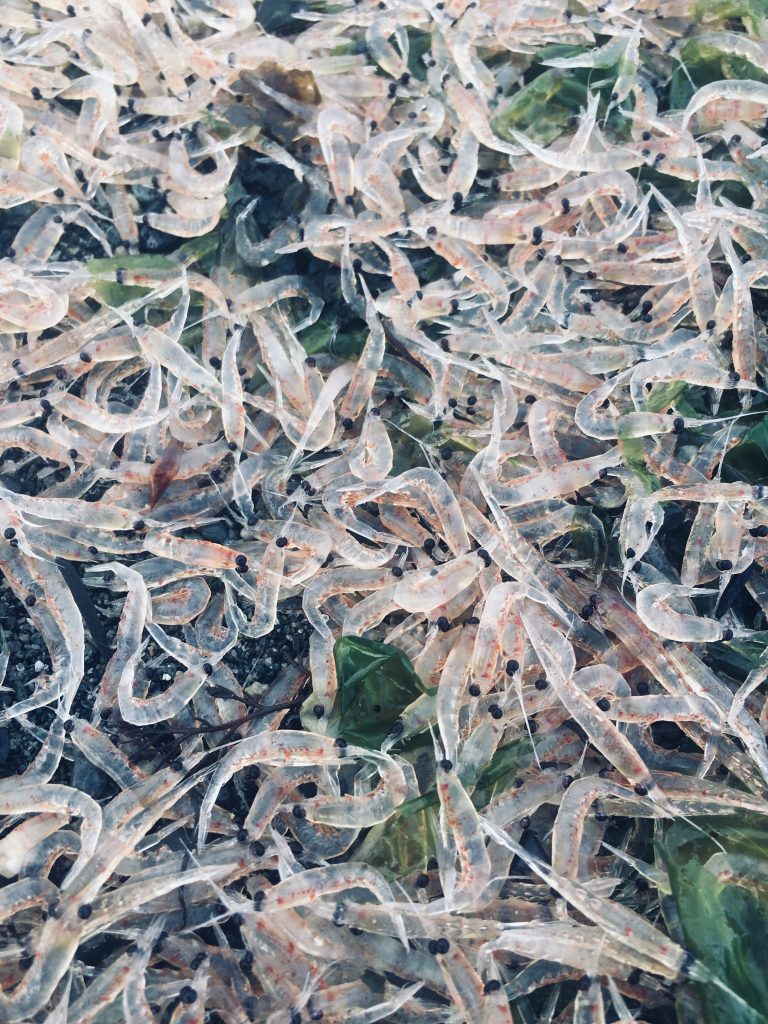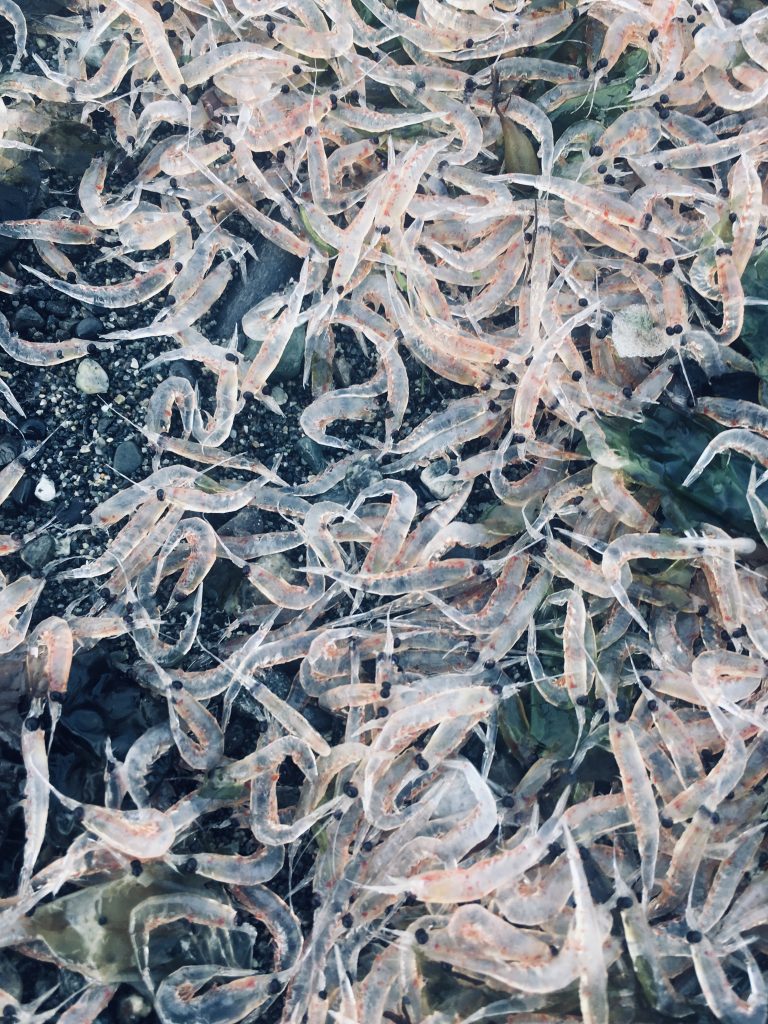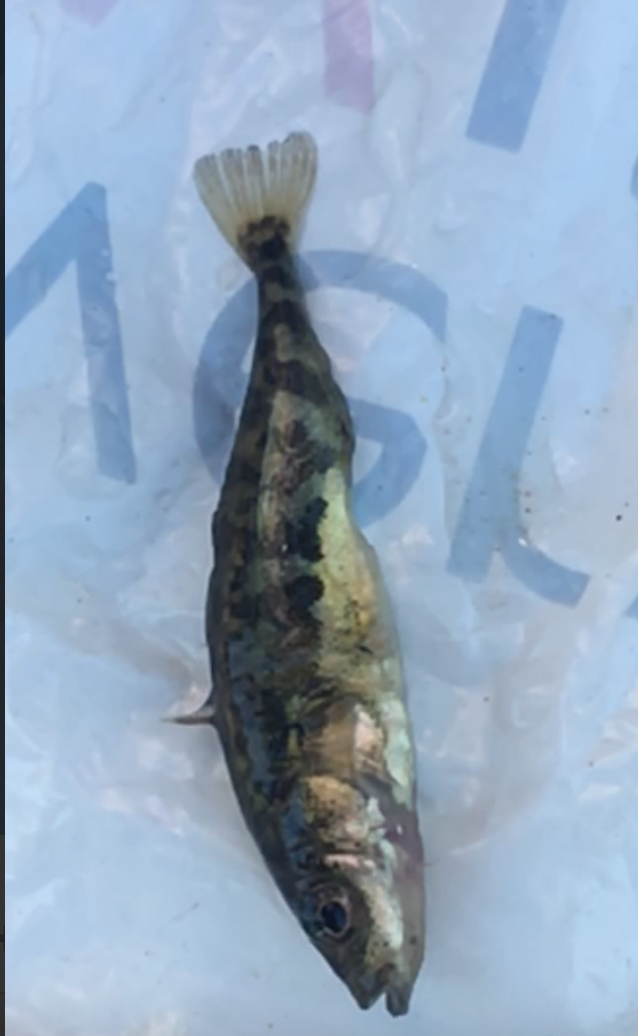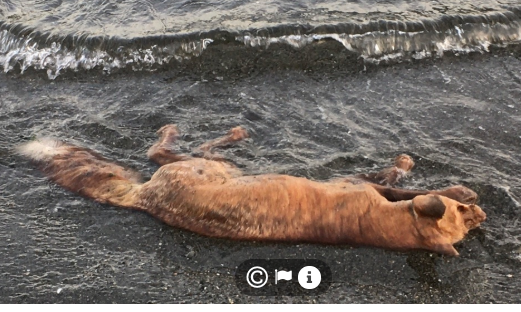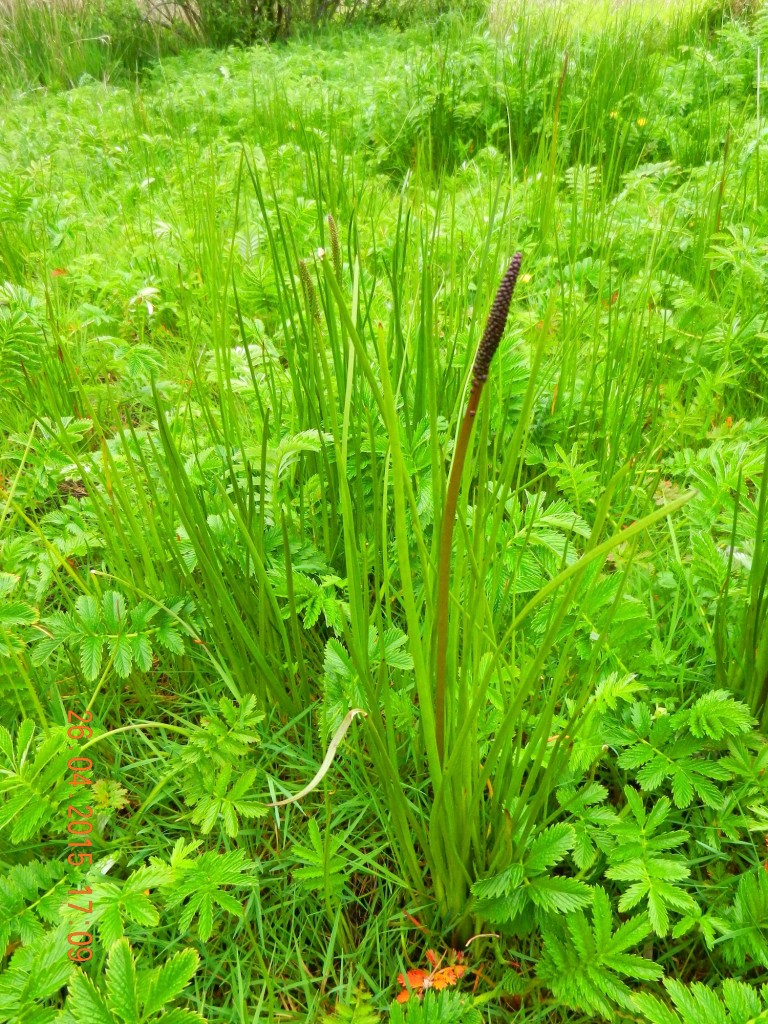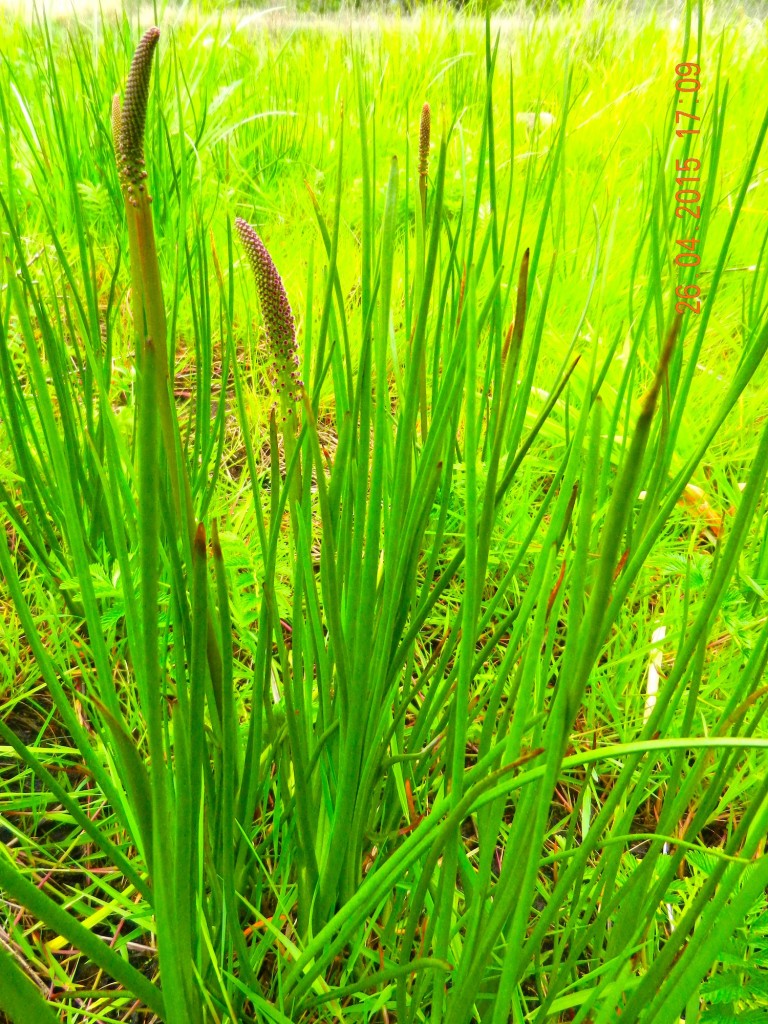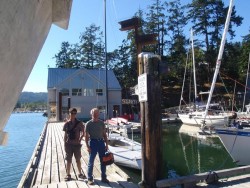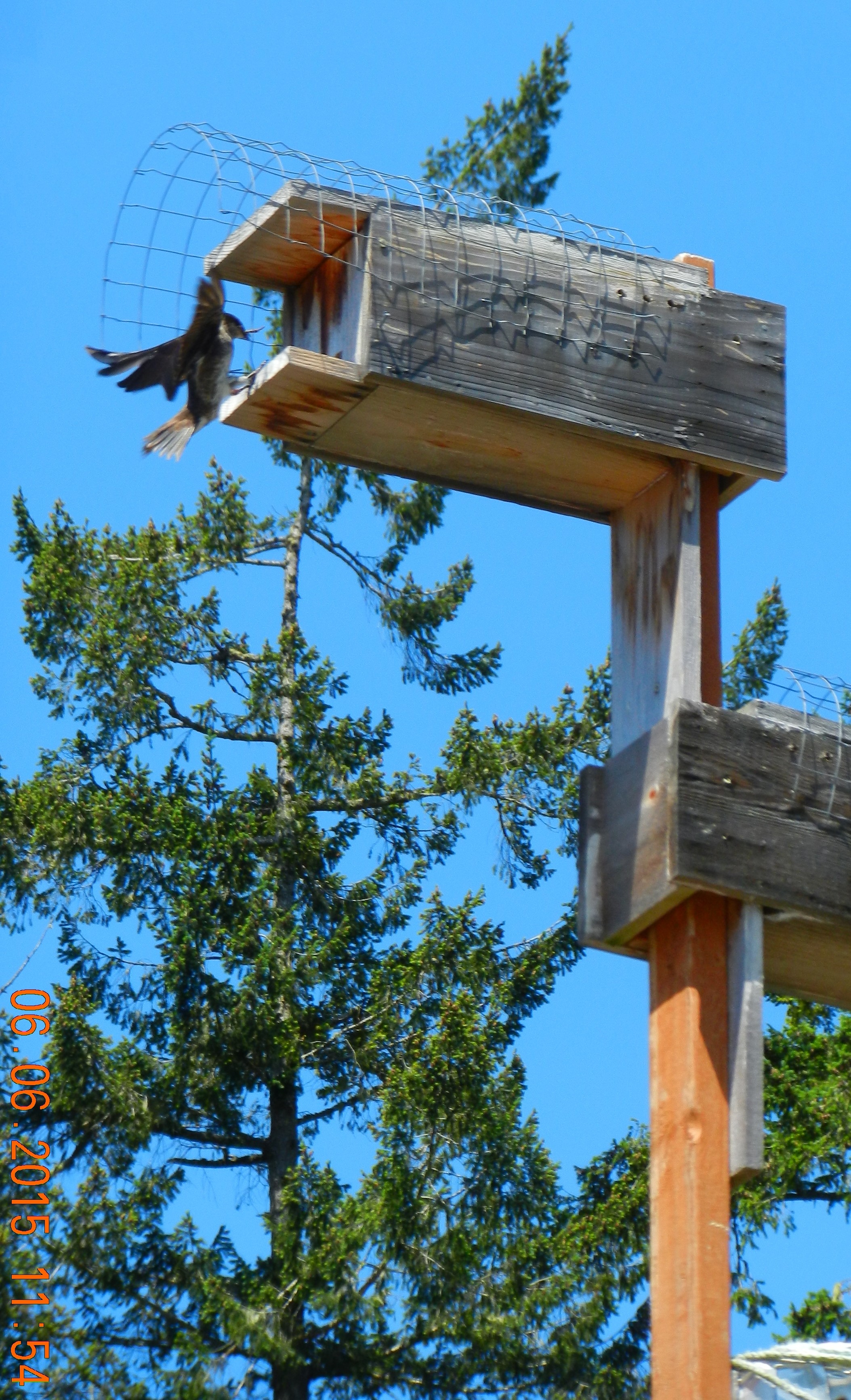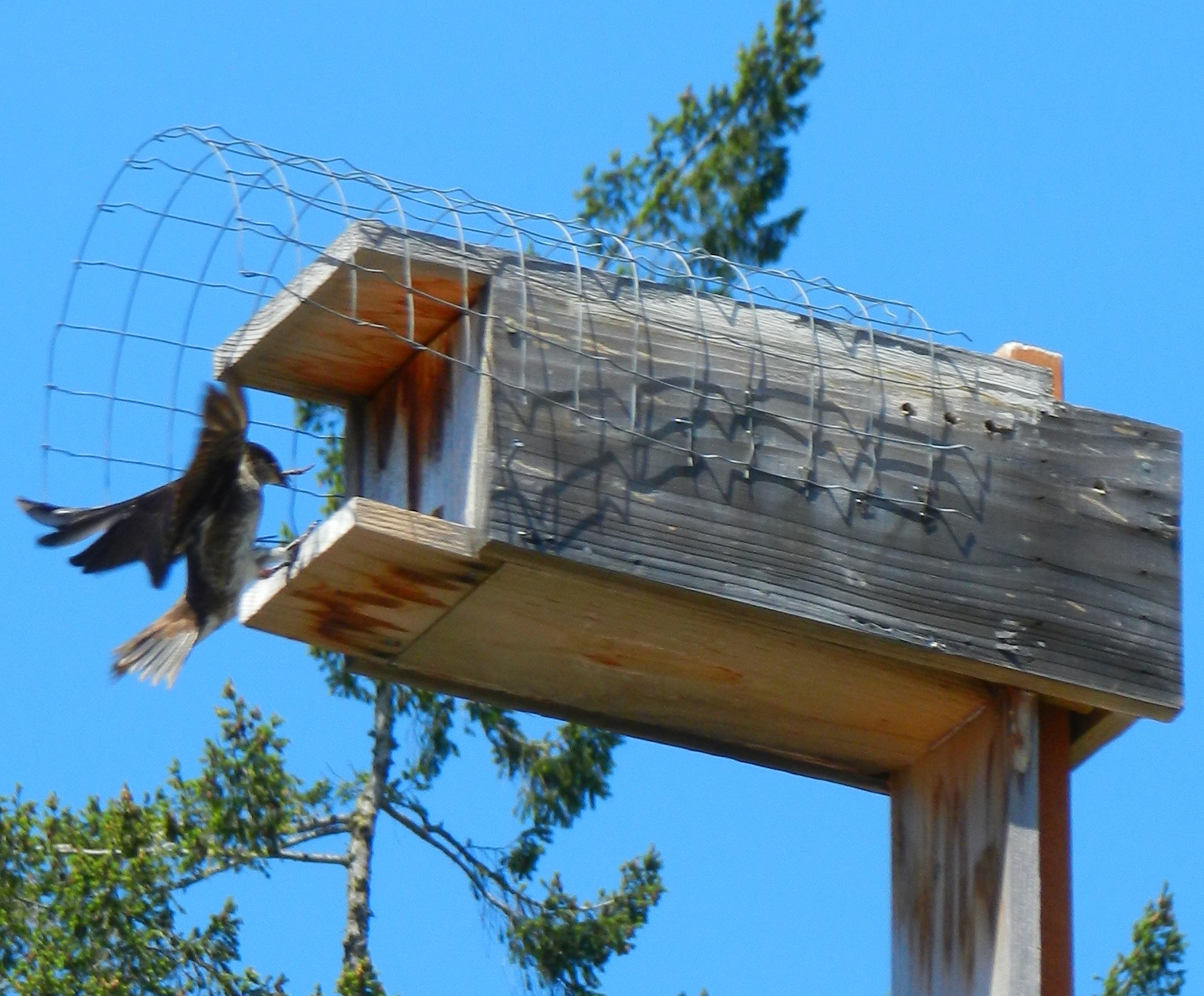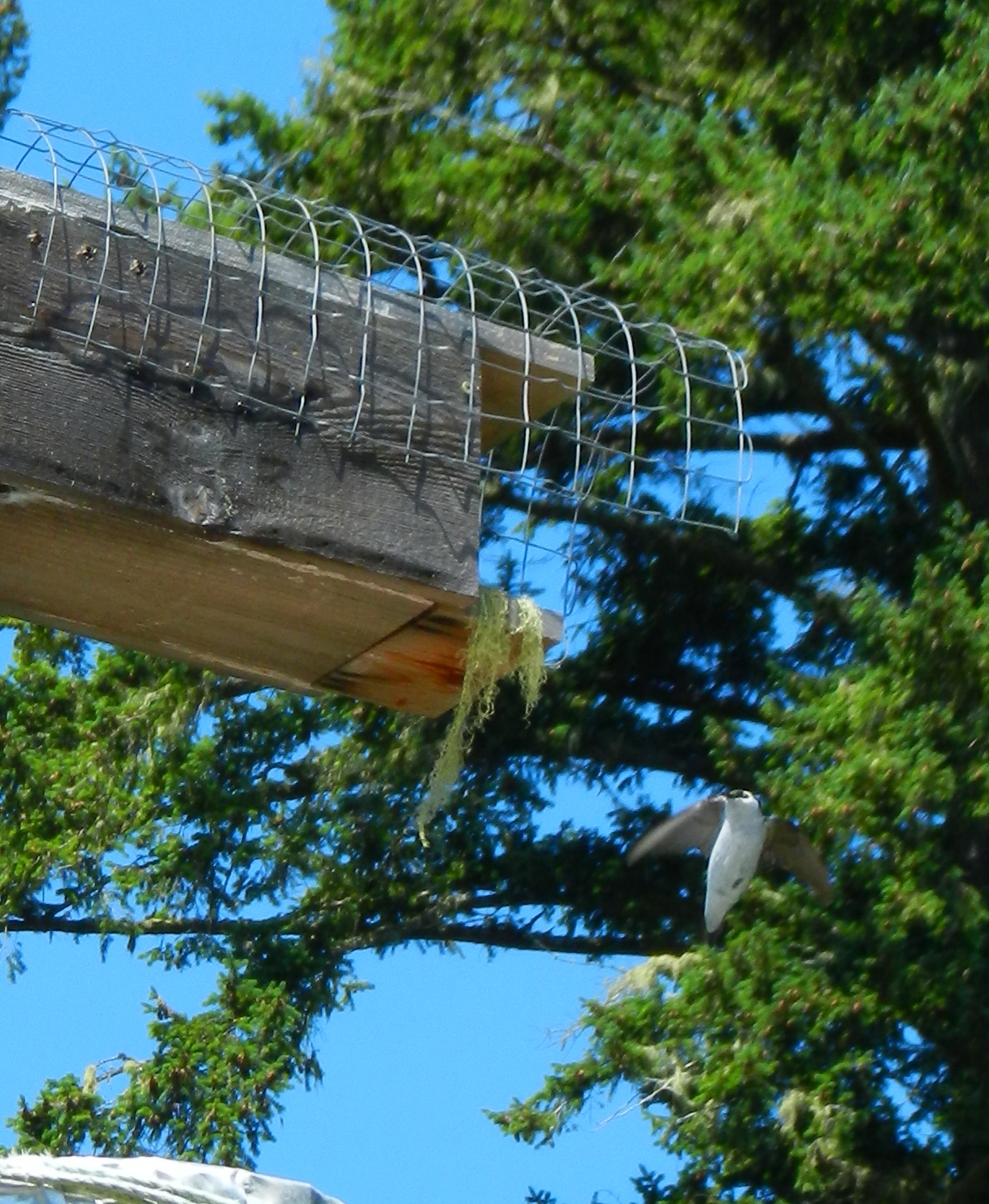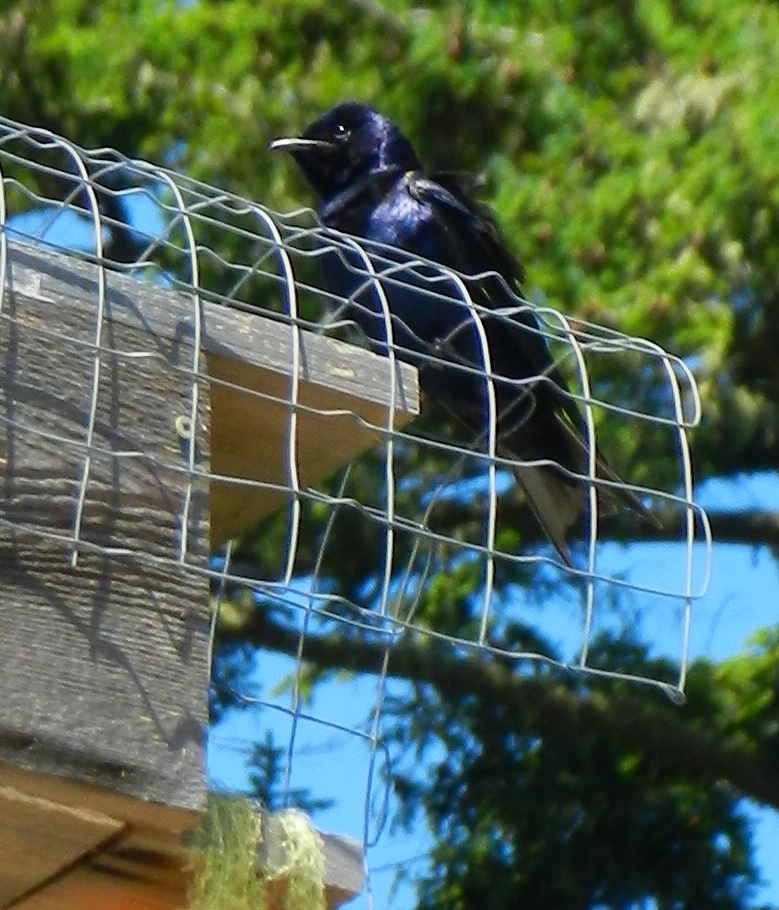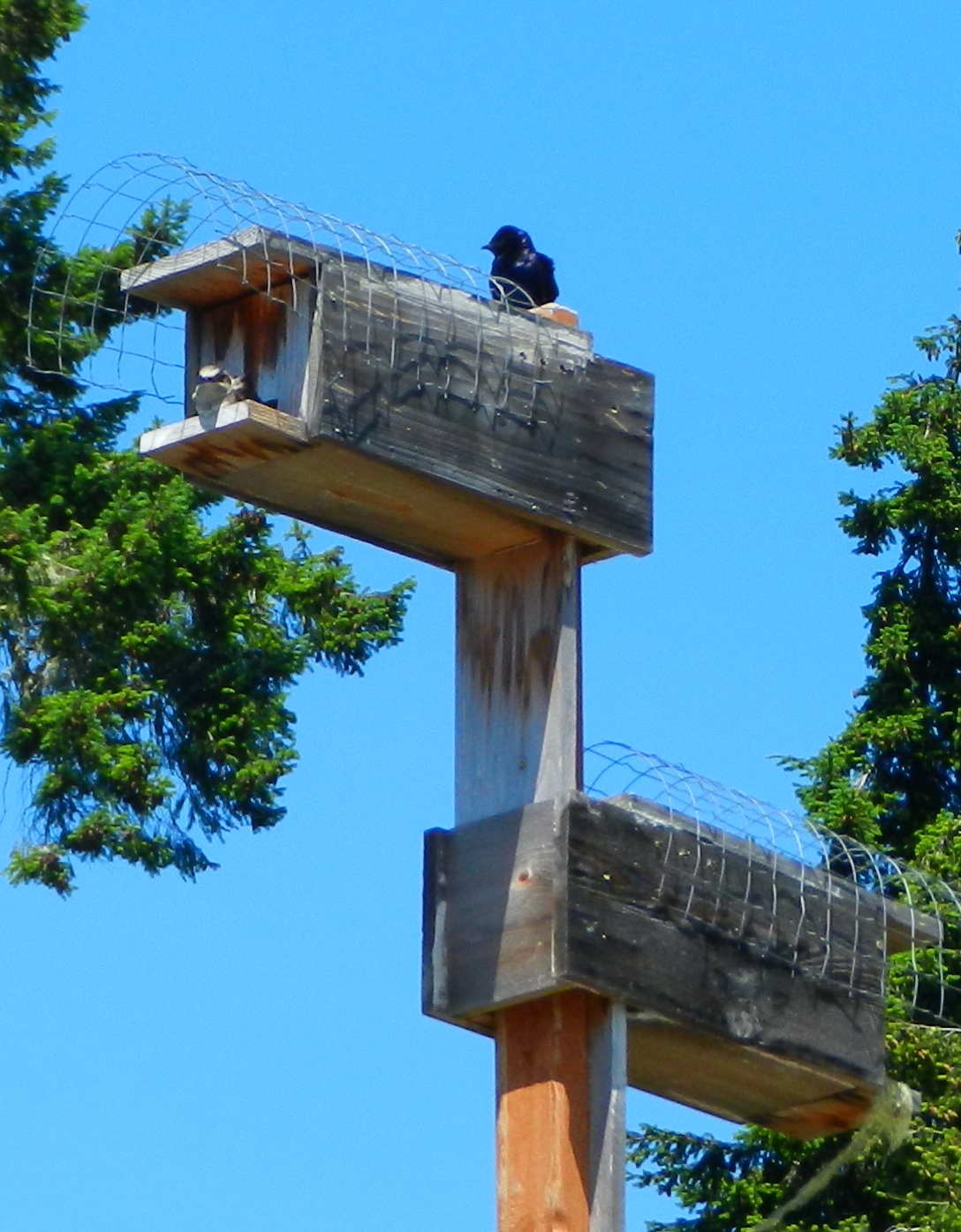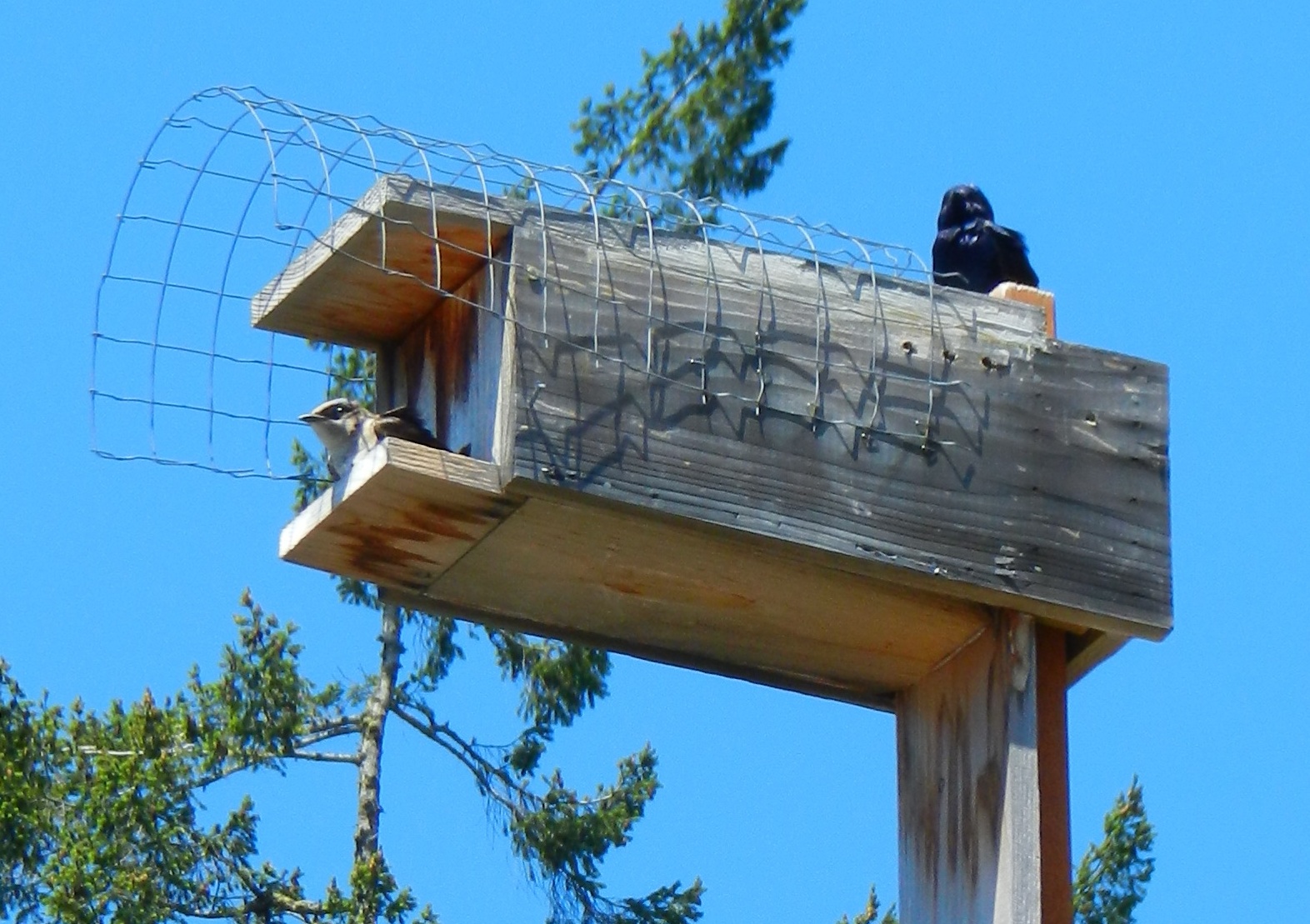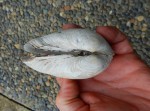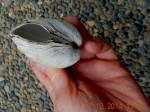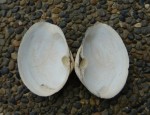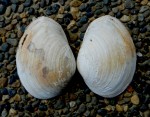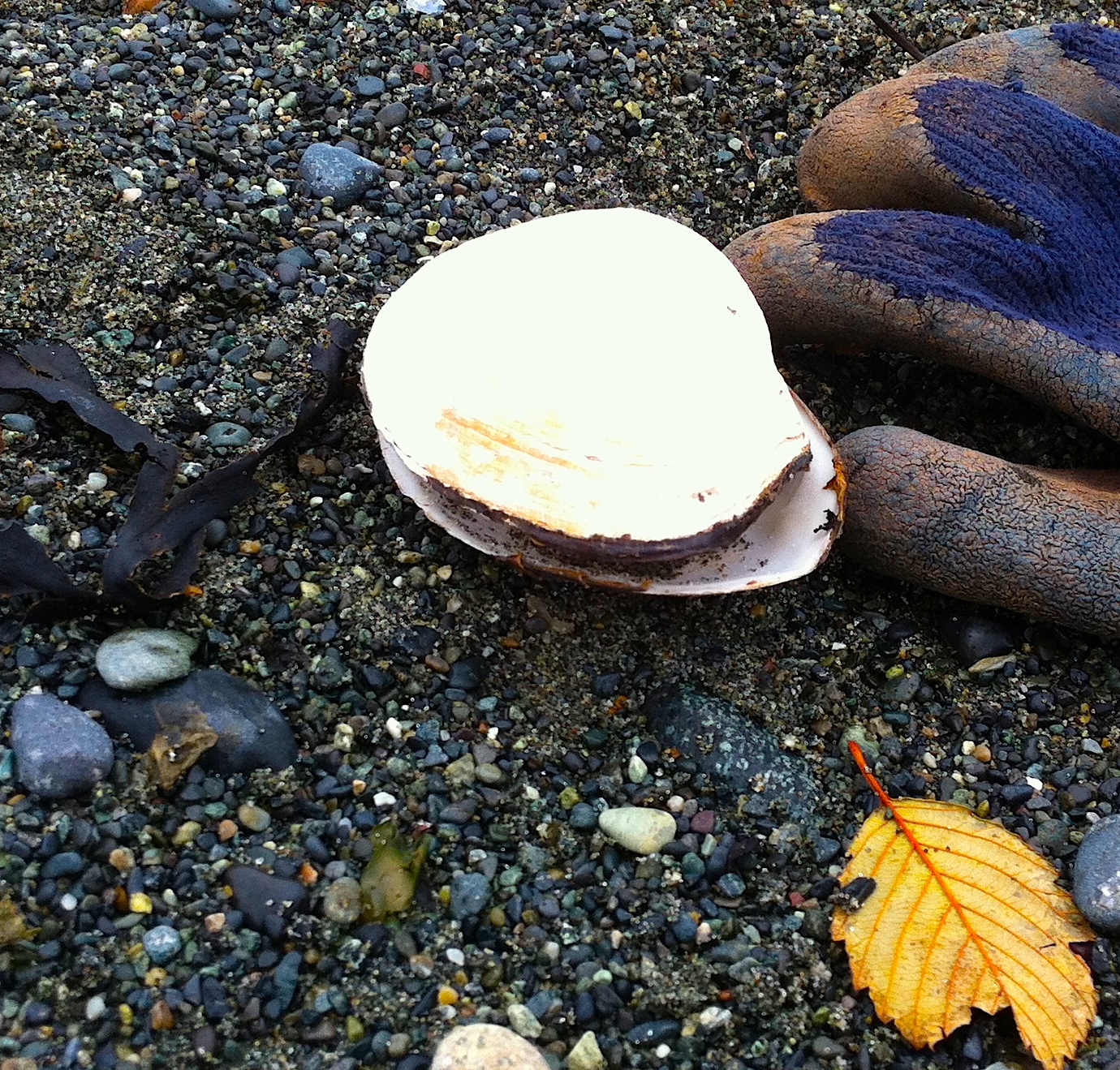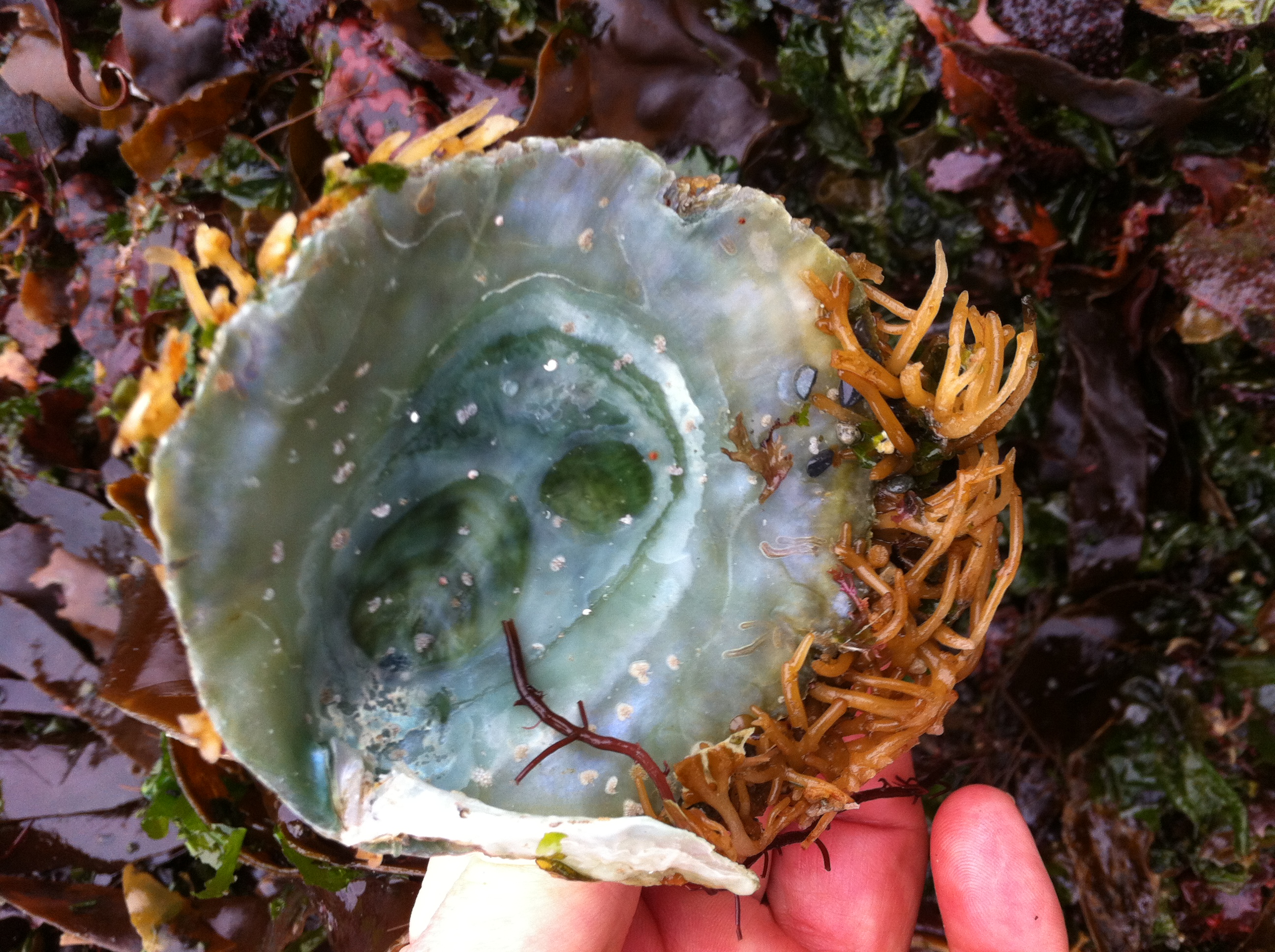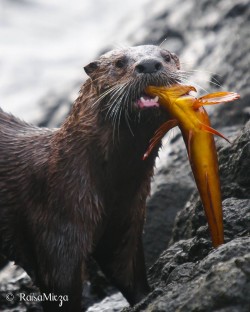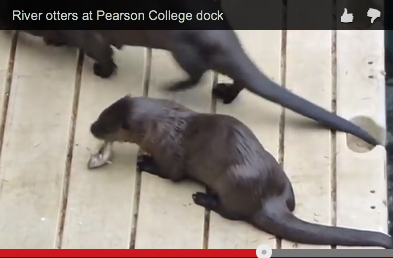On February 9, 2023 Deidre Chettleburgh and her grandson Ben retrieved this 37 cm wolf eel from the strand line on Taylor beach.
Although the experts on iNaturalist identified it as a wolf eel, (https://inaturalist.ca/observations/148414762 ) this description of a juvenile wolf eel from Wikipedia doesn’t really fit . ???
“Younger wolf eels are orange with big dark spots in the posterior part of the body. Once older they turn grey, brown greyish or dark olive.”[7][8]
This individual was very dark black. Also in my many years of Diving around Race Rocks Ecological Reserve I never saw anything like it.
https://racerocks.ca/anarrhichthys-ocellatus-wolf-eel-the-race-rocks-taxonomy-2/
- wolf eel teeth
- pectoral fim
- dorsal and ventral fin run the full length of the body
- oval markings on dorsal fin
- on each side there were two holes punctured
Classification from Wikkipedia:
| Kingdom: | Animalia |
| Phylum: | Chordata |
| Class: | Actinopterygii |
| Order: | Scorpaeniformes |
| Family: | Anarhichadidae |
| Genus: | Anarrhichthys Ayres, 1855 |
| Species: |
A. ocellatus
|
| Binomial name | |
|---|---|
| Anarrhichthys ocellatus
Ayres, 1855
|
|


